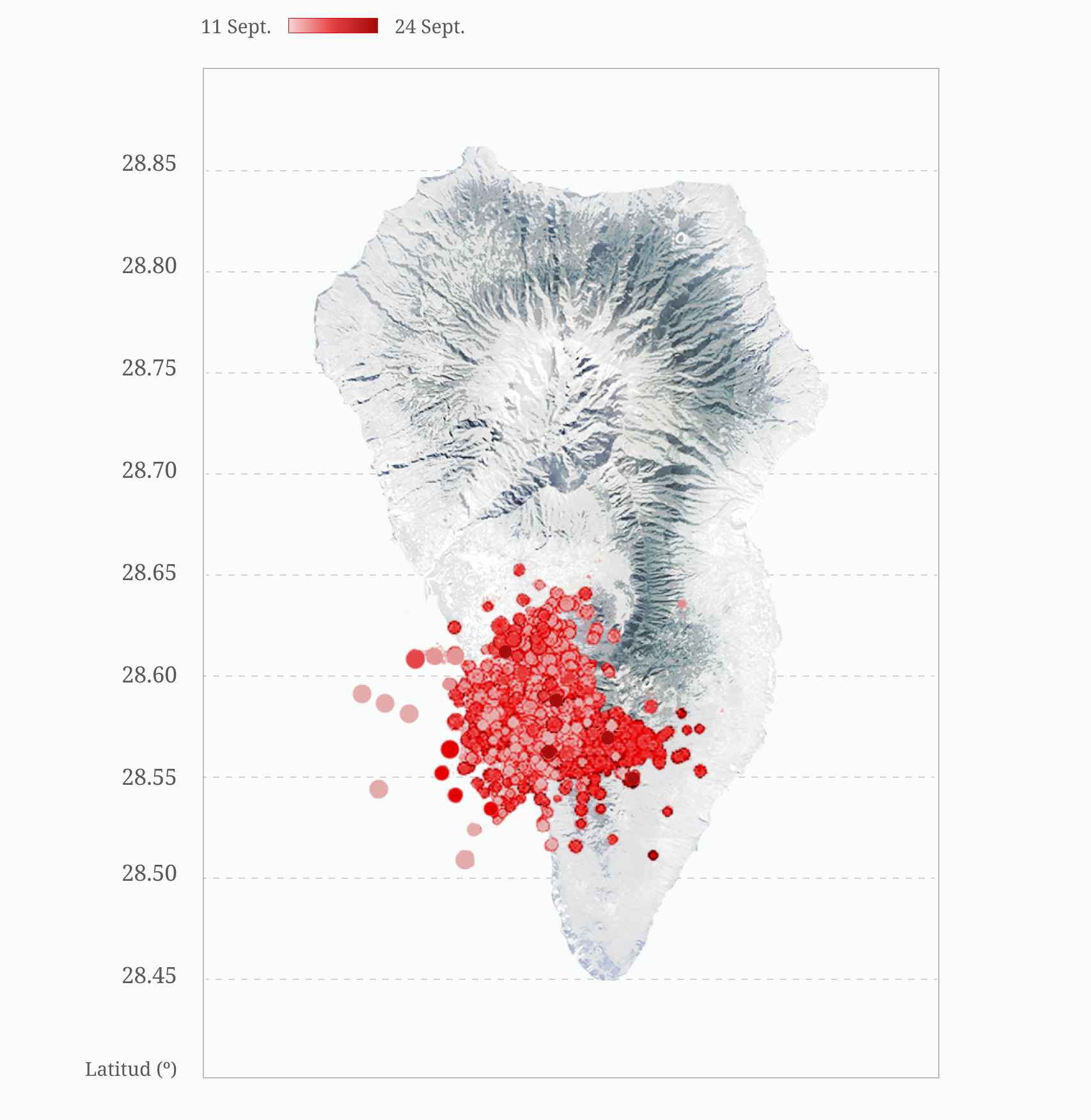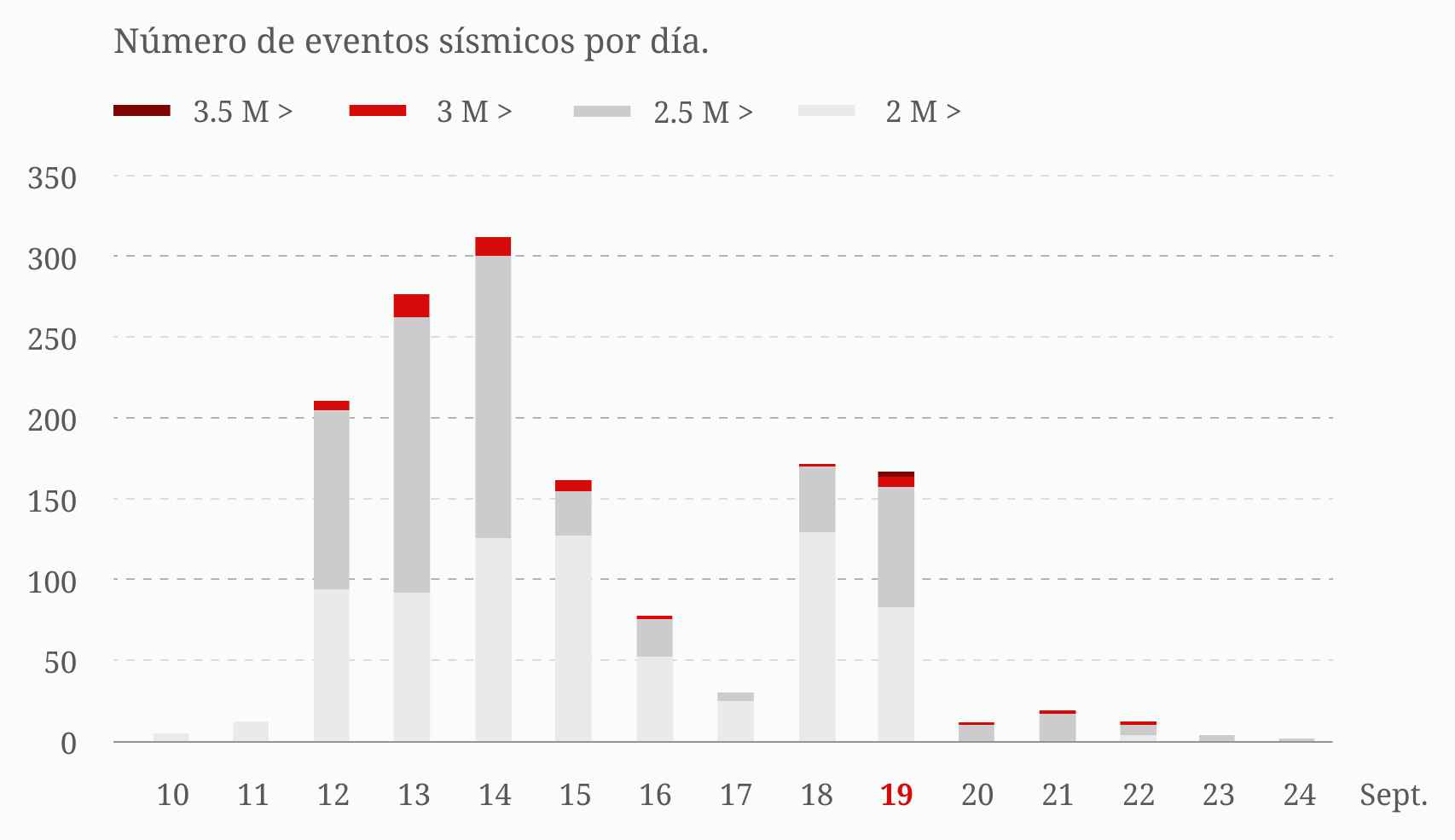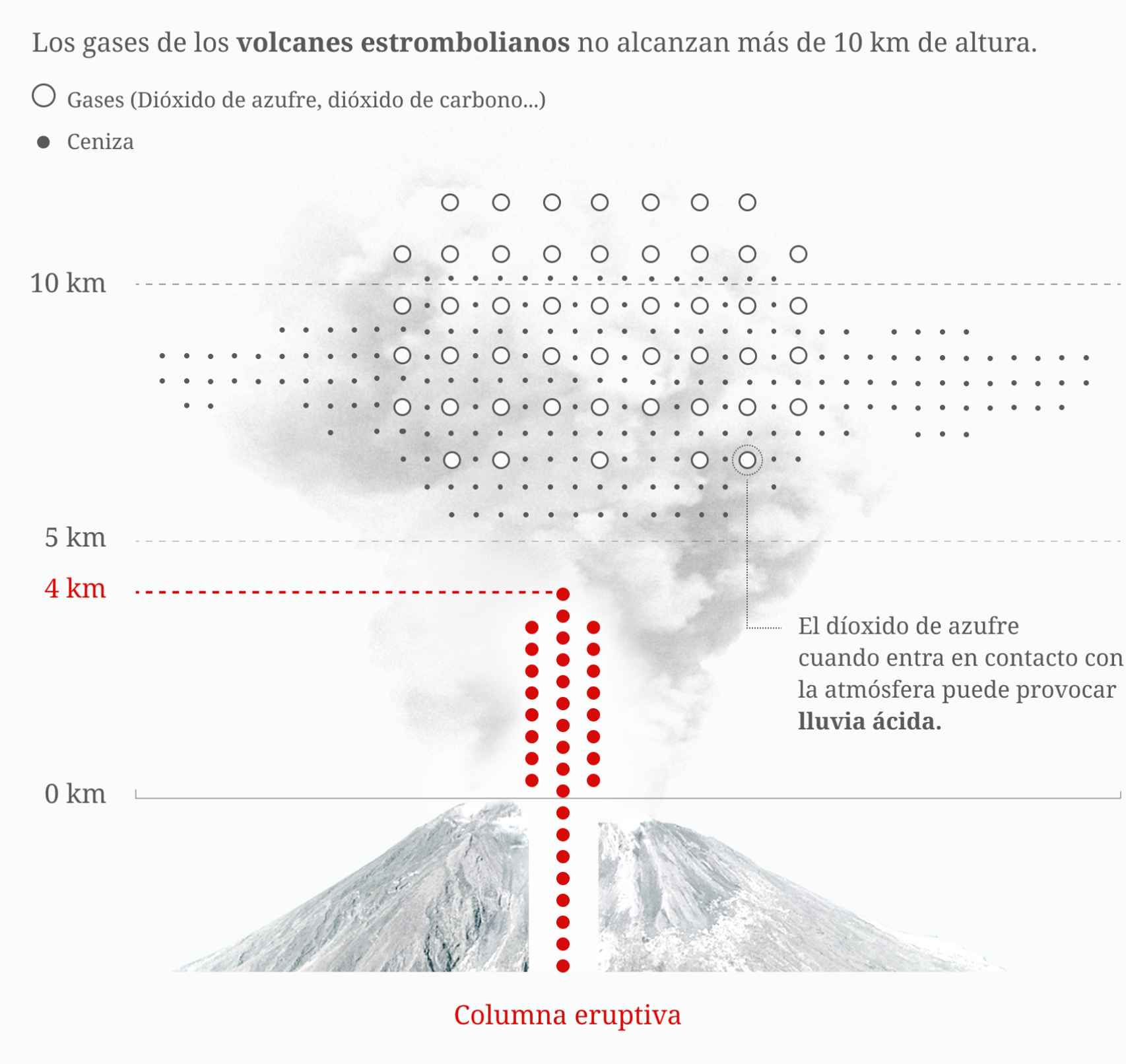For a week now, the world has looked uneasily towards La Palma: the eruption of the Cumbre Vieja volcano in Cow’s head, the evacuation of the Llanos de Aridane neighborhoods and the images of the fury of nature have shocked and moved in equal parts. Satisfaction with the effectiveness of the operation that has prevented personal injury contrasts with the magnitude of the catastrophe and the many doubts about the future of an area on which thousands of families depend, in which there are more than 6,000 displaced persons, and which will never return. to be the same.
The lava flow has Since the eruption of Sunday, September 19, a total of 190.7 hectares have been covered, destroying 420 buildings so far, in addition to 15.2 kilometers of roads, according to data from the European Union’s Copernicus program satellite. The direction of the Special Plan for Civil Protection against Volcanic Risk (Pevolca) reported on Friday an intensification of the one explosiveness of the eruption with increases in the expulsion of pyroclastic material and ash. On Saturday, the cone of the volcano broke, releasing a new stream that runs over the previous ones in the direction of the sea. These are the keys to a few days that are already part of history:
Shake the earth
The chain of earthquakes that began to the west of the island on Saturday, September 11, was the first indication of a possible eruption: it was still too early to be sure, but the monitoring and protection mechanisms were already in place. The seismic swarm is a process that responds to the “normal operation” of the islands, explained David Calvo, spokesman for the Canary Islands Volcanological Institute (Involcan), to EL ESPAÑOL. The magmatic body at the base of the achipelago has been pushing towards the surface for years, causing earthquakes as it gains more and more frequent, intense and superficial energy.
The National Geographic Institute of La Palma has registered around 1,500 earth movements on the island since that day. On Sunday 19, at 10.19 in the morning, the largest tremors were recorded, with a magnitude of 3.8 and with a deformation of more than 15 centimeters. They were the prolegomena of the eruption that would occur hours later. The outcome took everyone by surprise: the seismic swarm that announced the eruption of Teneguía in 1971 had lasted for three months.
The eruption
At 3:12 p.m. on Sunday, September 19, after feeling a small earthquake in the town of El Paso, the Cumbre Vieja erupted with a tremendous explosion and a large column of smoke. The fissure-type eruption opened at least seven eruptive mouths that expelled lava flows, basalts, pyroclasts – fragmented magma that is expelled through the eruptive column into the air during the eruption – and gases. It is a ‘strombolian’ type volcano, named after the famous Italian island: a ‘quiet’ phenomenology in the words of the volcanologist Itahiza Domínguez of the National Geological Institute, as it advances relatively slowly despite the steep slopes of the island.
The Strombolian eruption could be considered a “luck”, stated Professor Arnau Folch of the Barcelona Geosciences Institute of the CSIC, in terms of population evacuations and the impact on air quality. In a ‘Hawaiian’ type volcano, like Kilauea, there would be very fluid lava that would travel through terrain very quickly. Large explosions would not occur because the gases escape easily, but it would disable the airspace – ash is a “sandpaper” for aircraft engines, pilot Vicente González explained to Omicrono – as the Icelandic Eyjafjallajökull did in 2010.
On the other hand, an enormously explosive ‘Vulcan’ eruption would have caused a column 3 to 20 km high, throwing debris from kilometers away and raising strong waves, although not as serious as the hypothesis of the ‘La Palma megatsunami’ revitalized in networks. Finally, a ‘Plinian’ or ‘Vesuvian’ eruption would be the most disturbing: clouds of fiery gas and ash that advance brilliantly, burying cities at once, as happened in Pompeii and Herculaneum.
The tongue of fire
At nightfall on Sunday, and in the following days, the overwhelming magnitude of the eruption has manifested itself in the eruptive mouths, expelling red-hot lava that descends down the slopes and buries towns such as Todoque under volumes of up to 12 meters and higher temperatures. at 1,300 degrees Celsius. According to satellite images from the Copernicus Emergency Management Service, more than 400 homes have been destroyed and there are about 200 hectares affected, while the original wash progresses slowly – less than one meter per hour – slowing down due to having to push more and more magmatic material cooled.
On the other hand, the expulsion of gases through the volcanic plume, made up of ash, carbon dioxide, sulfur dioxide and other chemicals, is reaching maximum peaks of up to 5,000 meters in altitude. It will be at those heights where the winds will direct them south, to the islands of La Gomera and El Hierro, and also to “mountainous” areas of Tenerife, according to the State Meteorological Agency (Aemet).
This carries a very small probability of acid rain, a phenomenon that occurs when the water acquires a higher pH than normal. However, Aemet points out, the event would not pose a health risk. And although the ash reaches many points on La Palma with thicknesses of up to three centimeters, the air quality has not suffered either in the archipelago, as shown by continuous monitoring, since the most dangerous concentration of gases only occurs at high altitudes, in uninhabited areas.
What will happen now?
The most distressing factor for the displaced from Los Llanos de Aridane is knowing if they will be able to save their land and homes. In the afternoon of Friday, a new eruptive mouth forced to evacuate also the neighborhoods of Tajuya, Tacande de Arriba and Tacande de Abajo. Despite the titanic efforts of firefighters and volunteers to try to divert the laundry and save the urban area of Todoque, the buried land will remain impassable and sterile for decades, a severe blow to banana cultivation.
The regeneration of the area could potentially be accelerated through a CSIC operation consisting of transporting fertile land from other areas of the island. More complex is the future of those who have lost their home: aid and compensation plans for the victims can collide with illegal constructions that do not appear in any registry.
What the specialists can anticipate is that the eruption can intensify at any time, and it seems to be long-lasting: it can last from two weeks to 24 days as happened with the Teneguía, or extend for months, like the half year of activity of the Fagradalshraun in Iceland, which has already expelled 143 million cubic meters of lava. Knowing how much magma remains to come out is one of the main unknowns: the IGN tries to determine it from the deformation of the ground – “it is as if you take a sheet and put a ball inside, the surface deforms and can give us an idea of how big it is “- but the uncertainty is great.
It remains finally to find out when the lava would reach the sea, which would cause a large cloud of vapor that does not pose a risk to health. Although the first flows slowed down, the one that springs from the new eruptive focus on Saturday is “more fluid and faster.” Depending on the amount, the damage to marine ecosystems will be greater or less – although they are expected to recover quickly, as happened with the underwater volcano of El Hierro in 2011 – and a new peninsula could be formed. As has happened in other options, this new territory would be the property of the State, as he recalled. Notices Diary.
Follow the topics that interest you
Reference-www.elespanol.com



